The 10 Best Switch Games of 2022

The Switch remains an ideal gaming machine for three types of games: Nintendo originals, retro classics, and independent games. Not every independent game we loved this year is on the Switch (indeed, Norco, the year’s best, is everywhere but the Switch), but most are, alongside such great exclusives as the latest Xenoblade Chronicles, Kirby’s best adventure in ages, and an amazing port of an overlooked RPG classic. Whether you’re looking for time-consuming epics or fascinating little works of art, the Switch has you covered—and neither of those do it for you, you can always dig into countless ‘80s and ‘90s games from Nintendo and some of the best developers in gaming history.
We’re talking about the here and now, though, the present day, so let’s get to it. Here are the 10 best games released for the Nintendo Switch in 2022.
10. Xenoblade Chronicles 3
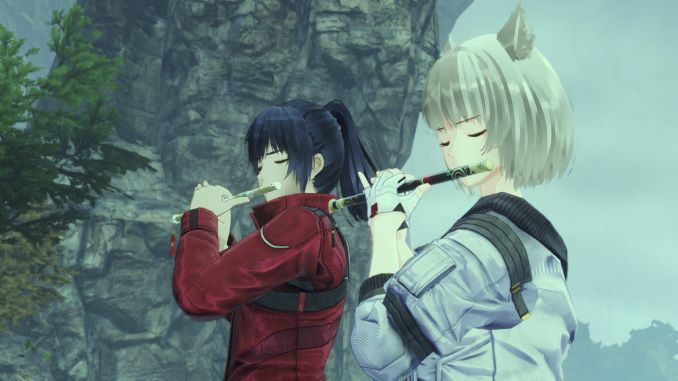
Xenoblade Chronicles 3 is a worthy addition to the franchise, one that succeeds in its mission as a culmination of the Xenoverse so far, and one that, despite building on top of pre-existing systems with even more of them, manages to streamline itself enough and in enough ways that it wouldn’t be a surprise for it to become the best-selling title in the series. It turns out you can sell philosophy to the kids, so long as that philosophy also has mechs. Monolith has come a long way since Xenogears and Squaresoft, and Xenoblade Chronicles 3 is evidence they’re still going to have places to go without needing to find a new developmental process or bosses, too. Whether it’s the “best” Xenoblade or not doesn’t matter as much as the fact that it fits in wonderfully with what already existed, and ensures that we should be looking forward to whatever those next steps for the series end up being, too.—Marc Normandin
9. OlliOlli World
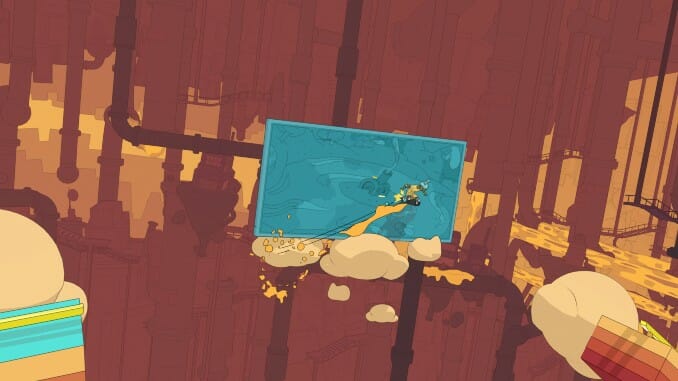
The third in Roll7’s series of arty, lo-fi skateboard games follows the typical trajectory of a videogame series: everything is bigger, longer, deeper. Beefier, even. It has characters. A whole story, even. At its heart it’s still the thumb-aching, quick-twitch trick machine that OlliOlli has always been, but with the narrative and world-building elements expanded so thoroughly that it doesn’t always feel like the elegant puzzle engine it used to be. That’s neither good nor bad—it comes down to your personal tastes—but it’s all done with the same charm and the same cool aesthetic that the series is known for. And given that it’s been seven years since the last time we dipped into a new OlliOlli, this is very cool World is a welcome one indeed.—Garrett Martin
8. Kirby and the Forgotten Land

I am no great lover of Kirby, Nintendo’s adorable little fluff ball who seems to star in a brand new videogame every single year. Kirby and the Forgotten Land shouldn’t be missed, though. It can be difficult for a non-Kirby diehard to tell the difference between a “mainline” Kirby game and all the various spinoffs he stars in, but just as Mario’s central platformers are a notable cut above the miscellaneous games he pops in, Kirby’s main entries are where the series truly shines. Forgotten Land innovates by dragging Kirby into the third dimension, and also by introducing a new skill that recalibrates how Kirby interacts with his world but that also feels perfectly in character for him and the series. After years of inhaling his enemies and stealing their abilities, Kirby can now swallow all manner of objects and assume their qualities for himself. Forgotten Land feels like no Kirby game we’ve played before, but it’s still purely, unmistakably Kirby, with all of its colorful charm and the flexible difficulty that makes it rewarding for both young beginners and stalwart veterans. It’s another successful Switch reinvention of a classic Nintendo series.—Garrett Martin
7. I Was a Teenage Exocolonist
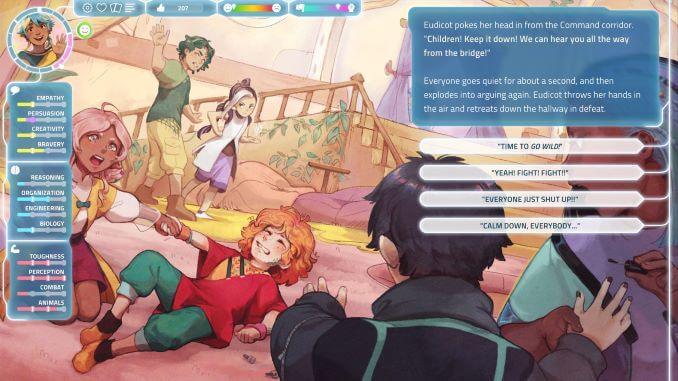
I Was a Teenage Exocolonist is a narrative-oriented life-sim that thoughtfully handles its wide range of ideas, full of sharp commentary and earnestly portrayed characters. As a member of the first generation raised on a distant planet, you witness political tumult and the dangers of your new home as you grapple with the universally awkward experience of growing up. Although its colorful aesthetic may make it seem like a “wholesome game,” it fully engages with the perils of its setting while still communicating the warmth of its characters and their relationships. It envisions what a better future can look like, rendering a post-capitalist commune where its characters question Earth’s regressive practices, but it avoids devolving into utopianism by grappling with the moral ambiguities of this colonial project, as well as the ever-present threat of right-wing reactionism. While its deckbuilding elements become a little stale by its conclusion, it foregrounds substantive choices that directly impact its characters’ fates, placing you at the center of political strife and interesting sociological questions. It’s thoughtful, kind, and just about everything I value in science fiction.—Elijah Gonzalez
6. Cult of the Lamb
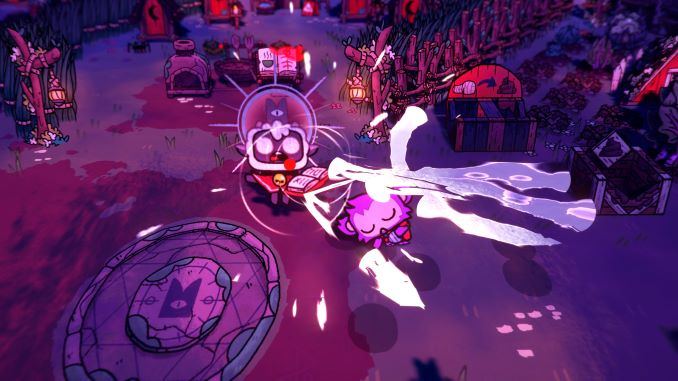
From the very moment Cult of the Lamb begins, players embark on a rollicking, deceptively cute, but ultimately sinister journey through the lands of the Old Faith, and it never lets up. Within seconds of gaining control of the game, the player is executed for being a potential vessel for The One Who Waits, a god who’s been bound by chains. This fallen god saves the player before charging them, a literal sacrificial lamb, with taking up a crown and restoring them to power. From there, players engage in a lot of frankly dubious behavior, indoctrinating dissidents of the Old Faith into a cult and deciding how best to exploit them.
Cult of the Lamb’s greatest strength might be its honesty. Action games are about this absolute physical dominance over other things and people around you, and management sims have always been about pulling on threads and watching systems big and small do your bidding. In a sense, Cult of the Lamb is this wholly self-aware marriage of two distinct, but intrinsically tied, genres about the order of things, and just immediately inserts you at the top of that hierarchy, laying it all bare. It drops all pretenses and weaves conquest and violence of various forms (spiritual, physical, and systemic) into its systems and simple story very satisfyingly. At the end of the day, your cult leader is little but an avatar for destruction masquerading as a hero. How much more of a videogame could you be at that point? And for that frankness alone, Cult of the Lamb is more than deserving of high marks.—Moises Taveras
5. Tunic
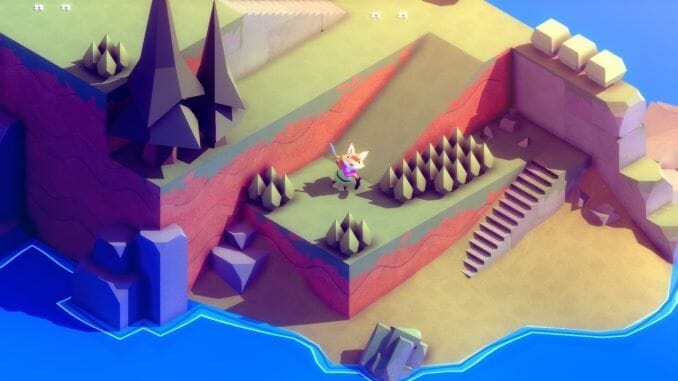
You know what’s just full of respect? Andrew Shouldice’s Tunic. That’s what. This one-man adventure jam doesn’t go easy with its puzzles, having faith that its players will be able to think their way through every tricky scenario presented to them. It also has a deep and overt respect for ‘80s Nintendo games, specifically the original Legend of Zelda; that’s evident not just in the game’s isometric view and general environment, but also in its in-game manual, which isn’t just some mystic, sacred text the adorable fox hero has to seek out, but also a recreation of an NES-era instruction booklet. Tunic sifts through the shared experiences of our gaming past to create something new and unique enough to exist outside the easy allure of nostalgia.—Garrett Martin
4. Live a Live

Live A Live still has it. Takashi Tokita led a young team of fans at Historia, Inc. to create a version of a classic as vibrant and exciting and crucially unique in Square’s catalog today as it was in 1994. Released between Final Fantasy VI and Chrono Trigger and passed over for translation due to its technically less impressive sprite work compared to its flagship siblings, it shines today as the celebration of a cult classic, with a worldwide legacy and influence as an important milestone in an entire alternate history of RPGs. Live A Live is the exact opposite of the unique masterpiece that’s so good it ruins other games: it is a heartfelt tribute to everything there is to love about the RPG format, and will leave you invigorated and excited not just to play more RPGs, but to watch more Kung Fu movies, more Westerns, more classic Sci-Fi. If you’ve even a passing interest in the genre, it is simply a must play.—Jackson Tyler
3. Neon White
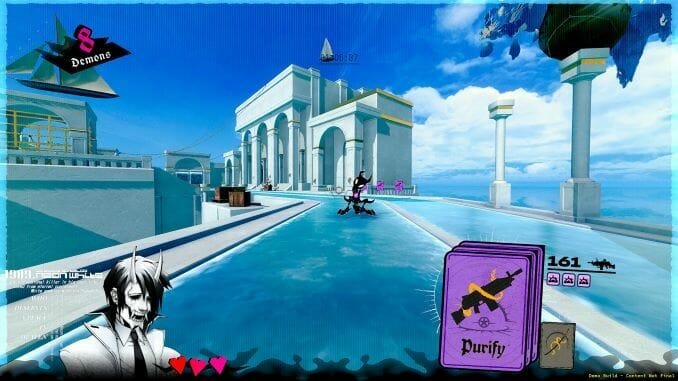
Neon White is pure motion. It might look like a first-person shooter—it’s in first person and you shoot a lot—but it’s all in service of the constant heedless rush at the game’s heart. Almost every time you shoot a demon it’ll be to acquire whatever kinetic ability it gives you, which you will almost immediately use to jump a little higher or rush forward a little faster or to literally grenade yourself dozens of feet into the sky to reach the next platform. You’re not here to shoot, per se, but to get from point A to point B as quickly as possible, and the shooting merely facilitates that. When you fully tap into its flow Neon White is about as exhilarating as videogames get, becoming an extension of your own nervous system as you effortlessly string moves together while trying to shave microseconds off your best time. And on top of its mechanical excellence it also has a story and cast of characters so well-written that I’m able to overlook its unfortunate reliance on an aesthetic and character tropes right out of anime. Neon White combines arcade elegance and extreme replayability with a genuinely thoughtful and surprising story, making it almost the best game of 2022 so far. It’s the only game that finally, fully broke Elden Ring’s hold over me; I haven’t set foot in the Lands Between since my first time sprinting through Heaven.—Garrett Martin
2. Signalis
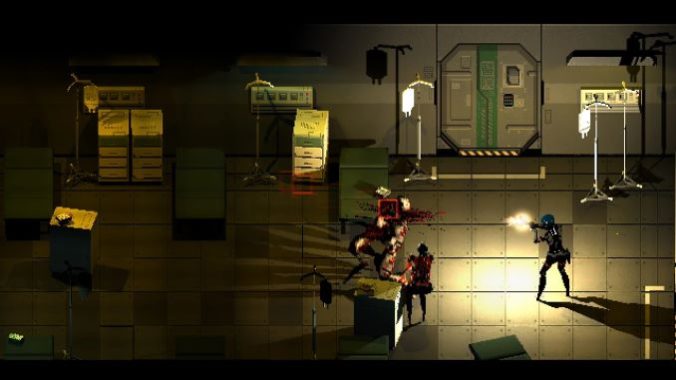
While Signalis fits into a larger trend of games that emulate PSX-era survival horror, its bold aesthetic choices and spellbinding storytelling help push it past its influences to create something singular. Its gameplay successfully channels some of the usual suspects like Resident Evil(2002) and Silent Hill 2 as your forage for keys, avoid Crimson Head-esque reviving zombies, and repeatedly backtrack to solve puzzles. However, its greatest selling point is that it has one of the most compelling videogame narratives of the year, its ruminations on death, identity, and accepting loss conveyed through cryptic symbolism and recurring cycles of pain. By constantly switching settings, artistic styles, and perspectives, it creates a disorienting headspace that emphasizes the confusion of its protagonist, slowly revealing the meaning of its recurring images until the horrible weight of it all comes crashing down. It’s a brainworm of a love story that I can’t get off my mind.—Elijah Gonzalez
1. Citizen Sleeper
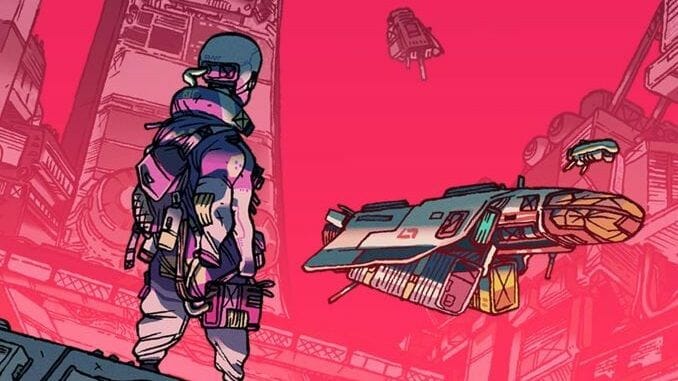
You can think of Citizen Sleeper as a sort of digital board game set in a sci-fi dystopia beset by end-stage capitalism and all the rampant dehumanization that entails. It’s a game about work and death where the only levity comes from the relationships we make with others—yes, the friends we made along the way, but not nearly as banal or obvious as that sounds. It questions what it means to be a person in a system that inherently subjugates personhood to corporations and wealth, and it probably won’t surprise you that the answers it lands on aren’t always the most optimistic or uplifting. Here at Paste Cameron Kunzelman described its “melancholy realism” as part of a trend alongside other story-driven games that are largely hostile to the dominance of capitalism, and it echoes the impossibility of thinking seriously about this medium, this industry, and, well, every aspect of society today without discussing the impersonal economic system that drives it all. It’s a heady RPG that respects your time and intelligence, and one of this year’s must-play games.—Garrett Martin